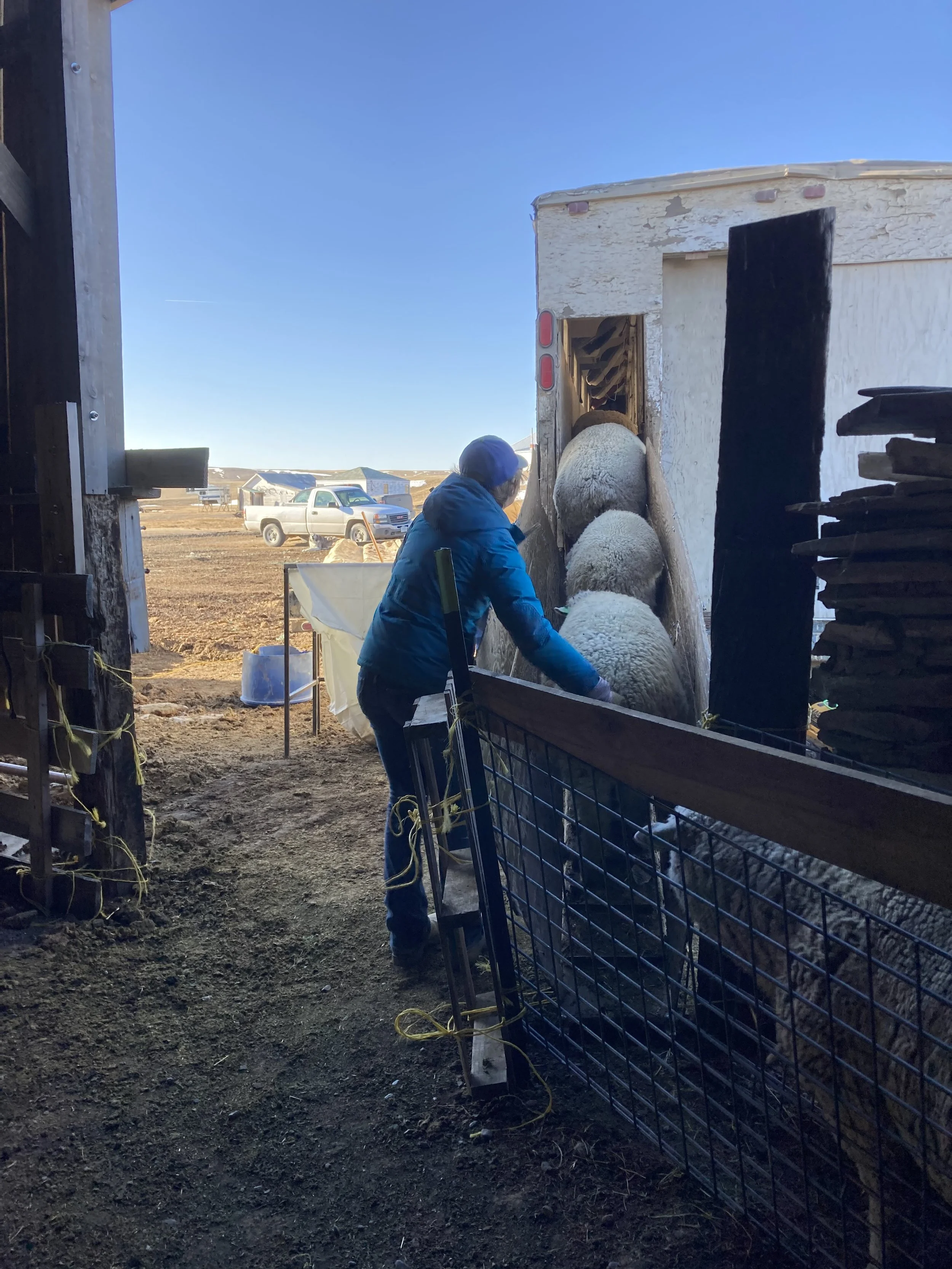Wool in the Barn
I have four years’ worth of wool sitting in my barn, warm and dry.
The guard dogs and barn cats sleep on the wool bags.
I haven’t sold wool since 2019, before Covid -- that delineation in life for so many of us.
Sheep shearers arrive sometime in March or April each year, before the lambs are due to hit the ground.
If a ewe endures stress, her wool develops a weak spot.
Lambing is stressful.
Also, newborn lambs might suffocate on cold nights if their mama provides a long wool blanket.
I try hard to keep weak spots at the end of the fiber and lambs alive so it is important to host sheep shearing before the end of April.
Even when the world shuts down.
Back in March 2020, advice from officials was to avoid close indoor contact and eating together.
This advice was in direct conflict with one of the unspoken, compulsory customs of sheep shearing -- feed the crew.
I don’t exactly remember, but I think we ate on paper plates that year.
Some of my wool goes to a local mill to be turned into yarn, socks and duvets, but the vast majority goes to Center of the Nations in Billings.
They sell it to either our military to be used in uniforms or to China so we all can buy cheap wool socks that wear out too soon.
In 2020, Center of the Nations was closed.
So was China.
My dogs and cats slept well.
By 2021, China was still closed and sheep producers had two years of wool in their barns.
Center of the Nations asked all of us to please keep it there because their warehouse was jam-packed. They were selling a little wool, but not much.
By 2022, the global wool markets were beginning to open, but supply far outweighed demand.
Australia, which produces by far most of the world’s wool, had at least two years’ worth stored, right along with mine.
Ships were stuck in ports, waiting to be unloaded for so long that buyers were losing their financing. They couldn’t pay the interest on their loans while waiting to for the wool to reach China.
The 2022 wool market existed, but only on paper.
I wondered whether Australian dogs and cats were sleeping warmly on bags of wool, too.
This week, I called Center of the Nations to ask about the price this year.
The price varies based on how soft the wool is and how long the staple is.
Wool from white sheep brings more than black-faced sheep because black-faced wool is typically coarser and black fibers imbedded throughout the wool change how the dye holds.
In 2018, I received $2.91 a pound for my white-face wool.
This year, it might bring $1.90, tops.
No guarantees, though. If the sheep collected burrs from their favorite wild licorice, a buyer won’t touch it.
Considering inflation, I would have to sell my wool for $3.52 a pound to meet the 2018 price.
If I sell it, I need to haul my wool to Billings by early June because the market shuts down in July.
I won’t leave newborn lambs that arrive in May to drive wool 250 miles to Billings.
Do I sell for almost half of what I received 5 years ago, knowing that inflation is eating away at the value sitting in my barn?
Or do I hold on to it for yet another year, knowing wool doesn’t spoil and maybe the market will bounce back if other producers take the 47 percent hit?
I have a month to think about it.
I know what my guard dogs and barn cats would do.
